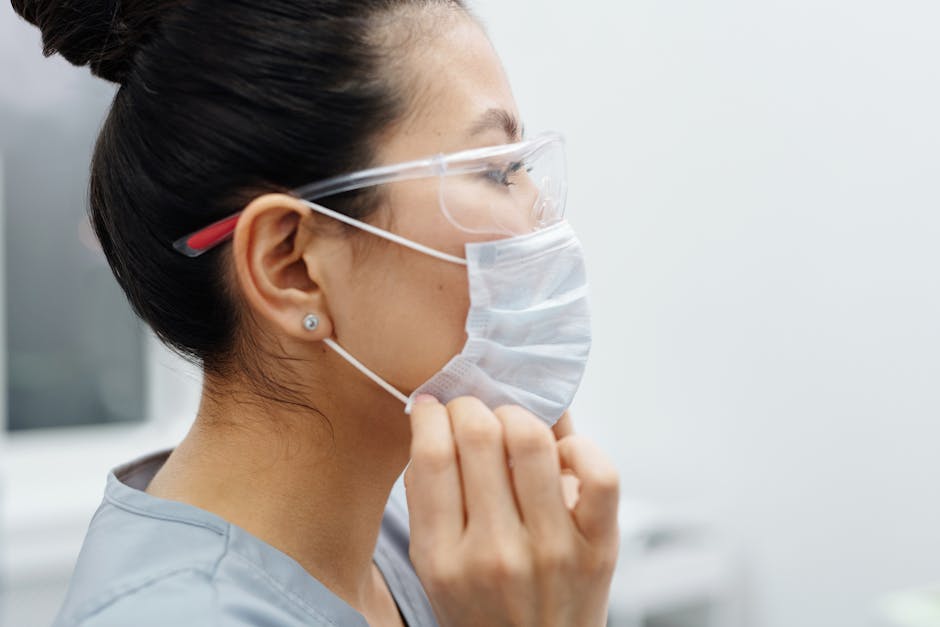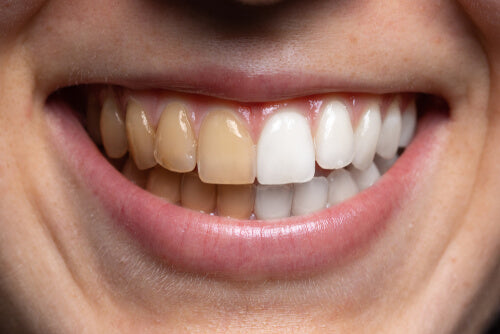What causes tooth stains?
Tooth stains happen because of everyday activities like drinking coffee and tea, smoking, and eating foods that can stain teeth. The pigments in these substances can stick to the enamel of your teeth, causing them to become discolored over time.

Different types of tooth stains
Tooth stains can be either extrinsic or intrinsic. Extrinsic stains are on the outer surface of the teeth and are typically caused by foods, drinks, or habits like smoking. They can often be removed with regular brushing and dental cleanings. Intrinsic stains, on the other hand, occur within the inner structure of the tooth and can be caused by factors like excessive fluoride exposure or tetracycline antibiotics during tooth development. These stains are harder to remove and may require treatments like professional whitening or veneers.
Foods and habits that contribute to tooth staining
Coffee, tea, and red wine are common culprits of tooth stains. Smoking is also a major factor in tooth discoloration. Dark berries like blueberries and blackberries can contribute to staining as well. Furthermore, sugary drinks such as soda can harm your teeth and lead to discoloration. Poor oral hygiene can make stains worse, as plaque buildup can attract stains more easily.
How tooth stains impact oral health
Tooth stains can be more than just a cosmetic issue. Stains on your teeth can indicate a buildup of plaque, tartar, or other harmful substances that can lead to cavities and gum disease. Regular brushing and flossing can help prevent these stains from forming and maintain good oral health. In some cases, tooth stains may be a sign of underlying dental problems that require professional treatment. It is essential to address tooth stains promptly to maintain a healthy smile and prevent potential oral health issues down the line.
Home remedies for removing tooth stains
Many people turn to home remedies to brighten their smile. However, it's important to approach them with caution as some may not provide significant results. Some home remedies for removing tooth stains that you may consider trying include:
- Baking soda and hydrogen peroxide mixture
- Apple cider vinegar rinse
- Coconut oil pulling
Remember, while these remedies are natural and easily accessible, it's crucial to consult with your dentist before trying any of them to ensure they are safe for your teeth.
Professional treatments for tooth stains
Professional treatments for tooth stains typically involve procedures such as professional teeth whitening or dental veneers. Dentists use strong whitening agents during professional teeth whitening to remove stains and brighten your teeth. On the other hand, dental veneers are thin shells that cover the front surface of your teeth to hide stains. Professional treatments like these offer long-lasting results and are often the most effective way to say goodbye to tooth stains for good.
Teeth whitening options
There are various options to whiten your teeth, ranging from over-the-counter whitening products like whitening toothpaste and strips to professional treatments such as in-office teet whitening and take-home kits offered by dentists. Each method varies in effectiveness, cost, and duration. It's essential to consult with your dentist to determine the best whitening option for your teeth, considering factors like your budget and desired outcome.
Laser teeth whitening procedure
Laser teeth whitening uses a concentrated beam of light to remove stains from your teeth. During the procedure, a special whitening gel is applied to your teeth, which is then activated by the laser light. This process helps break down stains and discoloration on your teeth, giving you a brighter smile. Laser teeth whitening is known for its quick results, often within a single session, making it a popular choice for those looking to achieve a whiter smile efficiently.
Preventing future tooth stains
If you want to avoid future tooth stains, there are some simple steps you can take. Here are some tips to help you keep your teeth looking bright and white for longer:
- Brush your teeth twice a day with a fluoride toothpaste to remove plaque and prevent stains.
- Floss daily to remove food particles and plaque from between your teeth where your toothbrush can't reach.
- Limit foods and drinks that can stain your teeth, such as coffee, tea, red wine, and dark berries.
- Rinse your mouth with water after consuming stain-causing substances to help prevent them from sticking to your teeth.
- Visit your dentist for regular cleanings and check-ups to keep your teeth healthy and free from stains.
Summary: Achieving a brighter, stain-free smile
To get rid of tooth stains and have a brighter smile for good, it's essential to understand why stains happen in the first place. Stains on the teeth can be caused by foods, drinks, smoking, or even poor oral hygiene. To prevent stains, it's crucial to practice good oral hygiene, brushing and flossing regularly, and visiting your dentist for cleanings and check-ups. Professional whitening treatments are also effective in removing tough stains and achieving a brighter smile. Remember, consistency is key in maintaining a stain-free smile!

